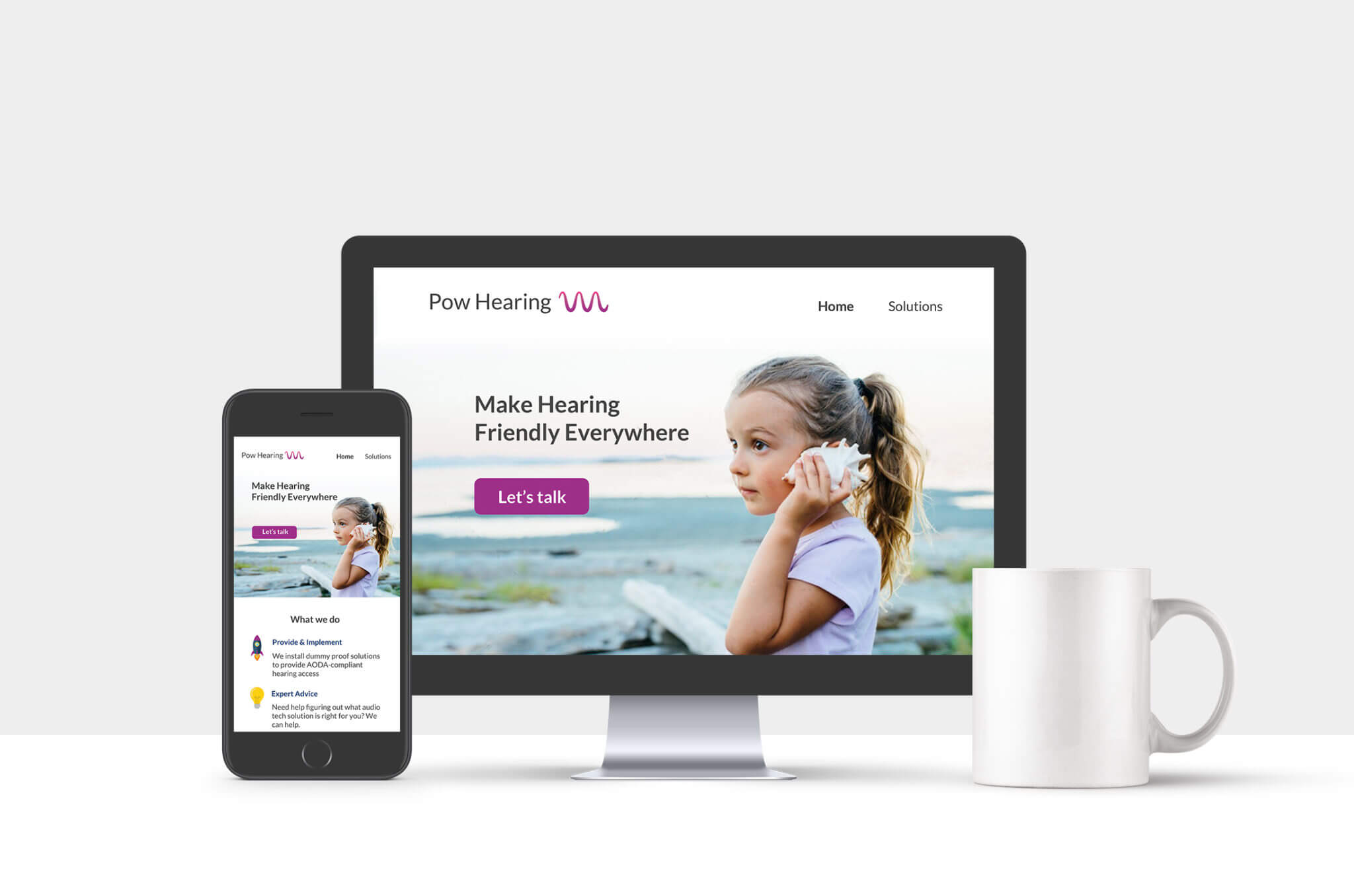
Case Study:
Making it easier to find an auto-shop
Case Study:
Making it easier to find an auto-shop
Timeline: Dec 2017 - Aug 2018
Deliverable: High Fidelity Mockups
Role: Joel Loyol (Product Design & Discovery)
Timeline: Dec 2017 - Aug 2018
Deliverable: High Fidelity Mockups
Role: Joel Loyol (Product Design & Discovery)
THE CLIENT

BUKL was started by two brothers who grew up around auto-shops, they would run around their father's diesel shop as kids. They knew first hand that auto-shops had not adapted with the times and embraced technology to improve their businesses. With this hunch, they brainstormed some ideas, hired a developer, and built out a website.
However, the site didn't turn out the way they expected...
The end result was lackluster and confusing. They weren't sure how to make it better. Not wanting to make the same mistake again, they did as most do and looked online for an answer and stumbled upon UX. Wanting to learn more about the process I was brought in to consult with them. I ran them through the process and gave them my thoughts on their current iteration of the site. Having gotten a feel for the process I was brought on to help lead them through the discovery and design process of building out they're business.
Starting from scratch
Talking with my clients we decided it would be better to focus on solving the problem they had originally set out to solve, rather than trying to fix their existing solution. Going into a problem solution first is often a less successful approach because you're putting on blinders to potentially better solutions. We focused in on two of their goals for the product:
- It should take advantage of existing mechanic shop infrastructure
- Improves the overall experience of going to a shop.
Research
Gathering insights from shop owners and operators
Working with my clients, we started off this project with was learning more about auto shops. I am not a car person, so it was interesting to get more familiar with an industry I had kept at arms distance. It was essential to learn about shops, their operations, the people behind the businesses and the problems they are facing.
To get familiar, we visited eight shops around the Danforth and Scarborough area of Toronto. Armed with questions and Tim Horton's gift cards we were able to gather info from a variety of operations, such as small independent shops to larger franchises. Talking to the owners and operators of the shops we visited, I was able to learn about how they operate and think. The majority of the shops we spoke to did not advertise or market themselves in any way. Instead, they relied on word of mouth and building a reputation for good customer service. The most successful auto shops were able to translate their reputation online via Google reviews. Even though shops didn't do any online advertising, it was clear that reviews on Google had a substantial effect on their business.
In general, shops didn't feel like they had many glaring problems and were hesitant about using technology to solve their problems. They had an old-school mentality and were cautious of complicated products. To them, it seemed more of a hassle and many of them felt that they wouldn't end up using it in the long run. In general, going to shops gave us the perspective to advocate for them during the design process.
Learning about problems customer have.
The other side of shops is their customers, to get their perspective we did user interviews and created a survey. What we learned pretty quickly was that many car owners were very frustrated with their experience going to mechanic shops. It seemed like everyone I spoke to had a horror story about bringing their car to an auto shop. Some people had the wrong parts replaced; others felt that they were provided services they didn't need in the first place. Many people felt out of their depth when dealing with a shop and because of that, they felt that they were being taken advantage of. In our survey, 61% of 77 respondents were very concerned that they were being overcharged for parts or services.
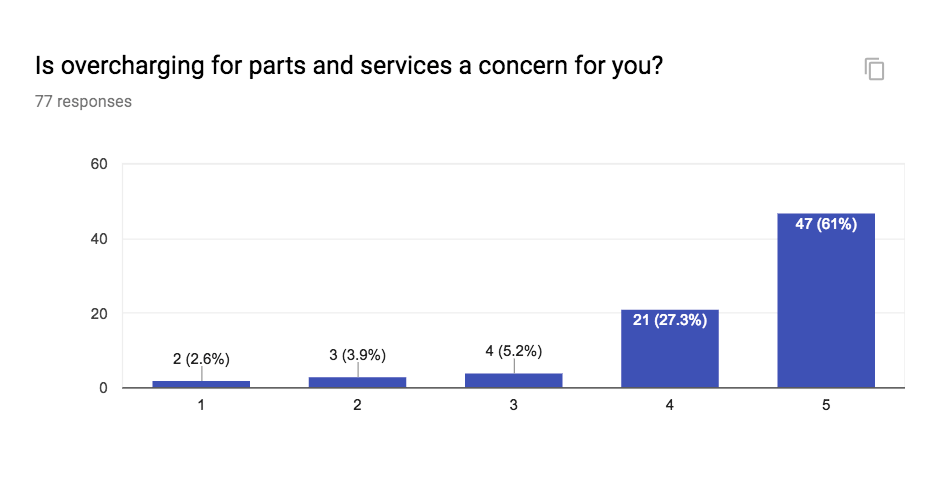
Many of the problems customers had, was because they didn't know enough about their car. They had to rely on their mechanic to provide them with the necessary information. The relationship was primarily built on trust. This was clearly illustrated when we asked in our survey for respondents to rate the following factors: professionalism, friendly service, trustworthiness, and price.
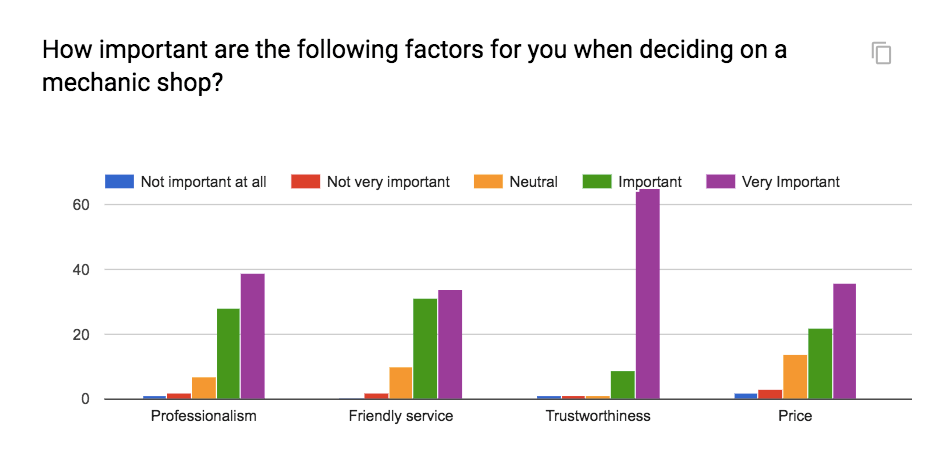
Trustworthiness was almost unanimously listed as a very important factor for customers. When speaking to a car owner who had found a reliable mechanic, he explained to me it was because he took the time to explain what was wrong with his car. The mechanic would physically show him why the parts weren't working and what services needed to be provided.
Ideation
Falling in love with the wrong direction
I admit it sometimes a product idea just sweeps you off your feet. In our survey, we included a couple of product ideas that we wanted to test the waters with. One of the features was that we would pick up a customer's vehicle from their workplace, bring it to a partnered shop to have it repaired/serviced. After repairs were done we would return it to them before the end of the day. In our survey, 56% of people said they were interested. It solved many of problems customers were having by simply giving them the opportunity to forgo to the whole of the process of going to an auto-shop. The beauty of the business was the economies of scale. With the amount of work we could provide to shops we would be able to use our purchasing power to drive the price down. However, not everything was perfect, the businesses itself is very logistically demanding and isn't quickly scalable. Infrastructure would have to be built out, making it harder to bring the product to new markets. This was a dealbreaker for my clients because it didn't fit their product objectives.
Trying a different direction.
We went back to the drawing board and revisited their initial concept. A product that allows you to book repairs/servicing with auto-shops. There was one main issue with the product there wasn't enough value for customers; it was easier for a customer to call up a shop and book an appointment themselves. We were missing an essential component, the hook, the feature that would create enough value to draw in customers. That's when we circled back to a problem we kept hearing from customers, that they felt like they were being overcharged. We thought that the best way to solve that problem would to give the customer the ability to look up prices for standard shop services. Shop prices can differ between regions but the formula to figure the amount of a job is pretty much the same:
(Hours * Labour Rate) + Part Costs = Service Price
At this point things started to click we realized that we could automate the quoting process for shops. Labor rates are set at each shop, and part prices could be pulled from a part database. Being able to compare shops on price was the missing hook for the product.
Looking into that idea, we found that there were existing businesses with similar products. However, none of these companies were currently operating in Canada. It also validated the product, without having to build it out or conduct extensive research. We were also able to leverage them during our process by creating a competitive analysis to understand their strengths and weaknesses. Which helped us, in the long run, make better decisions early on.
Planning
Now that my clients and I had landed on a product direction we needed to do some preplanning to help guide the design process. I worked with them to create two personas, a car owner looking to service/repair their vehicle, and the shop owner. Having a persona lets us view the product through the lens of the customer. Going through the wireframes, we would ask ourselves what would Maria do in this situation. The personas were created using our insights from interviews and survey responses.
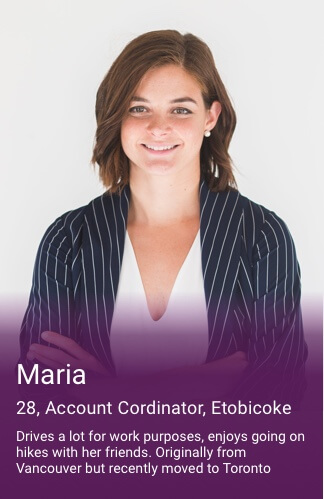
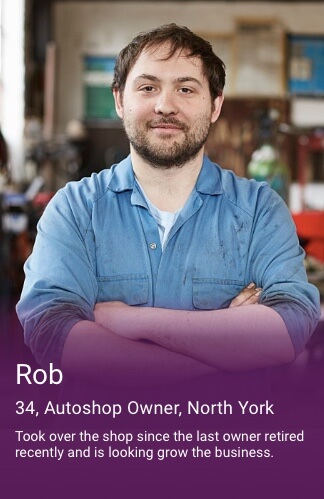
User Personas
Maria is someone looking to repair her vehicle. She is new to Toronto and doesn't know where to find a repair shop. Usually, she would take it to the same shop the rest of her family went to but no longer has that option. I chose a female persona for the customer because the women I spoke to and responded to the survey, felt mistreated and talked down to by shops they had gone to in the past.
Here are couple survey responses:
"Mechanics rarely take me seriously because I am a young female."
"I'm lucky in that my shop doesn't talk down to me because I'm a woman"
"I'm lucky in that my shop doesn't talk down to me because I'm a woman"
Rob a mechanic shop owner. Previously he only had to focus on fixing cars but now after taking over his shop has the role of growing the business. Rob has been struggling with marketing his business online, he isn't very tech savvy. He recently tried working with a marketer, spending several thousands of dollars advertising his business online but didn't get good results from it. It has left him feeling skeptical and dismayed with marketing online.
User Flow
I created a user flow to establish the customer's journey through the product. It is an easy way to map out the product in advance of designing. It served as reference material and helped layout the product early on.
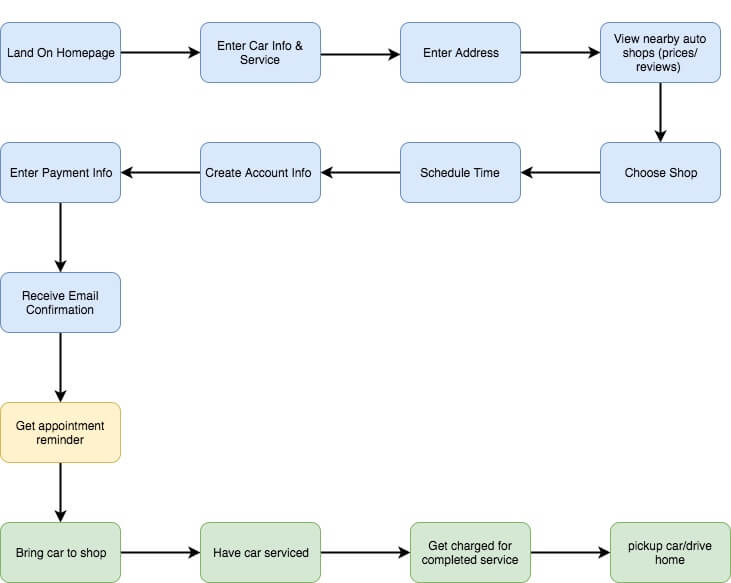
Design
Now getting into the actual design process. The goal of this phase was to create a high fidelity mockup of the product that will be passed on to developers. With that, I wanted to make sure we get the product to a place where when it launches that it is set up for success. I worked closely with my clients on the design working through the logic of the product and consulting with our key users to answer questions and test out the product.

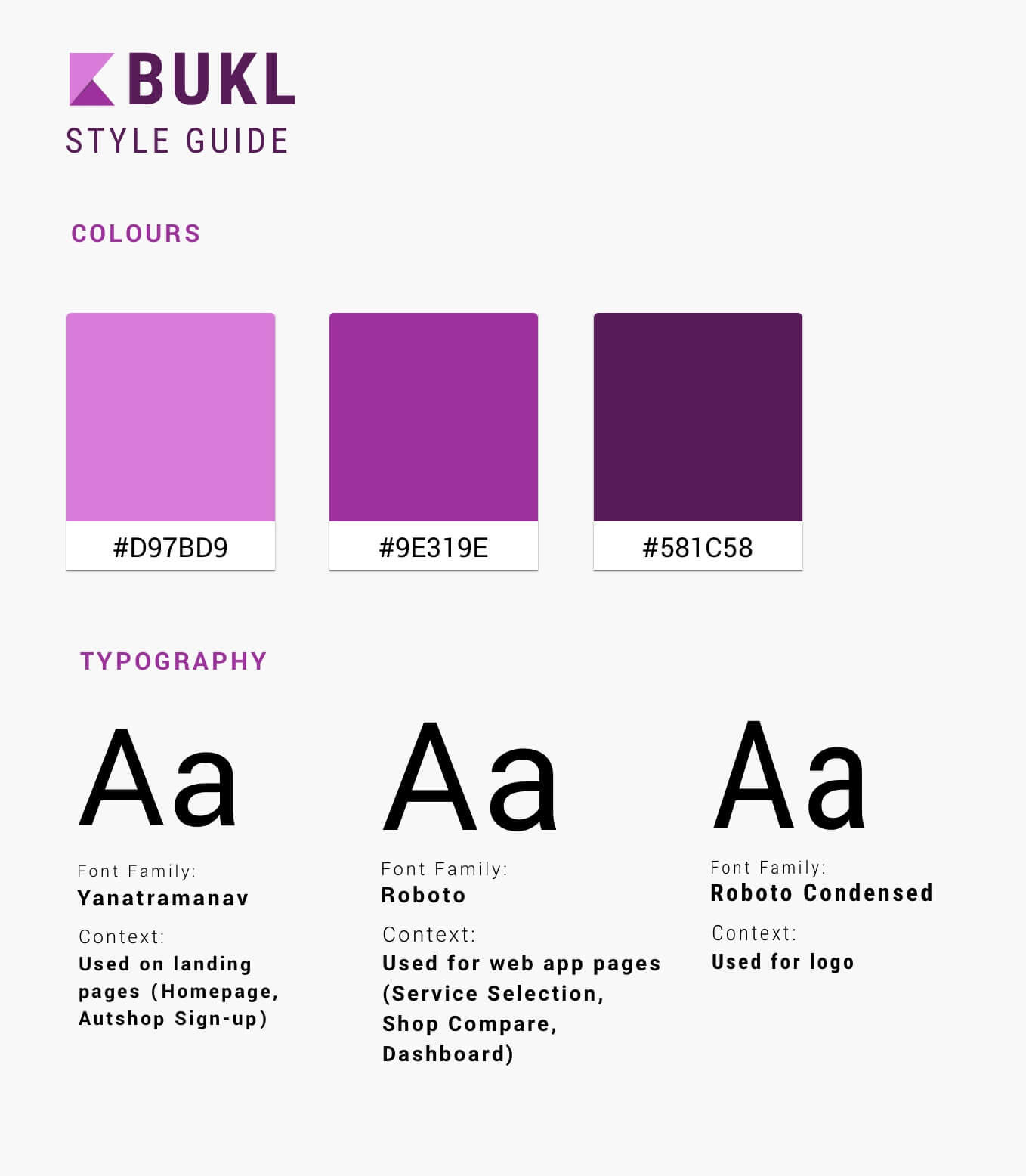
The Logo
Creating the brand identity started with the logo, it served as the seed for the brand. Looking at their original logo there were several problems. It felt very boutique and chic because of its elongated text. Not very indicative of the auto repair industry. The color was also a vibrant pink, which was very overpowering and could only be used sparingly on each page.
With the color, I went back and forth on possible color changes with my clients but we ended up deciding on sticking with the pink. We made that decision because of our customer persona, Maria. Pink naturally lent itself to making the brand more approachable to her and other women.
I did, however, need to make adjustments to deal with problems the logo still had. To compensate for the vibrant pink I toned it down by adding a purple and maroon. Making it more gender neutral but without losing its appeal to women. Also using darker colors felt more appropriate for shops, which are typically covered in oil and grease. With the typography, I changed the font to a bold Roboto Condensed because it made the logo feel heavy and sturdy.
The Brand
Since the logo had three colors it gave me plenty of options when laying out the homepage. When discussing the feelings the UI should provide users my clients used words like open, friendly, and trustworthy. Making it delightful but still feel professional. It was also important that I have it remain reflective of the auto repair industry, which I think the fonts helped accomplish. I used Roboto because it felt industrious and sturdy. I paired it with Yanatramanav because it is similar to Roboto but a bit sleeker making it better for large headlines. Overall my clients and I were happy with the end result of the UI.
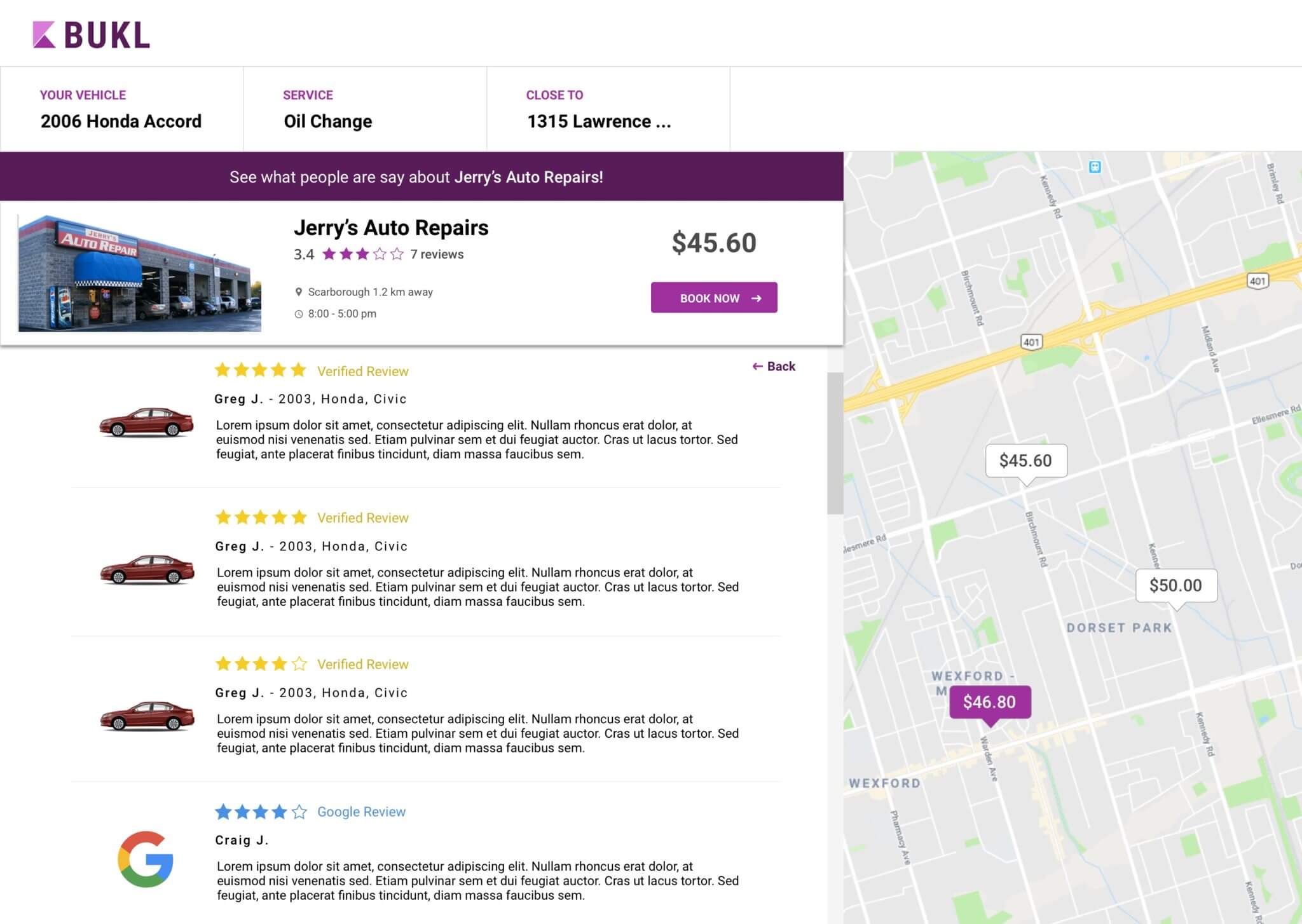
Creating a rating system that works at launch.
Early on we decided that we would have a rating system. From our user testing, it was shown to be an important factor for customers deciding on which shop to book with. Having ratings prevents shops from having to only compete on price and rewards shops for having good customer service. The only problem with having ratings is when the platform first launches there won't be any reviews, making customers less likely to book services on the site. To combat this we decided to pull the reviews from Google giving shops and a rating score to start with. Shops are limited to their last five reviews on google. We also make a distinction between reviews on Google and Bukl.
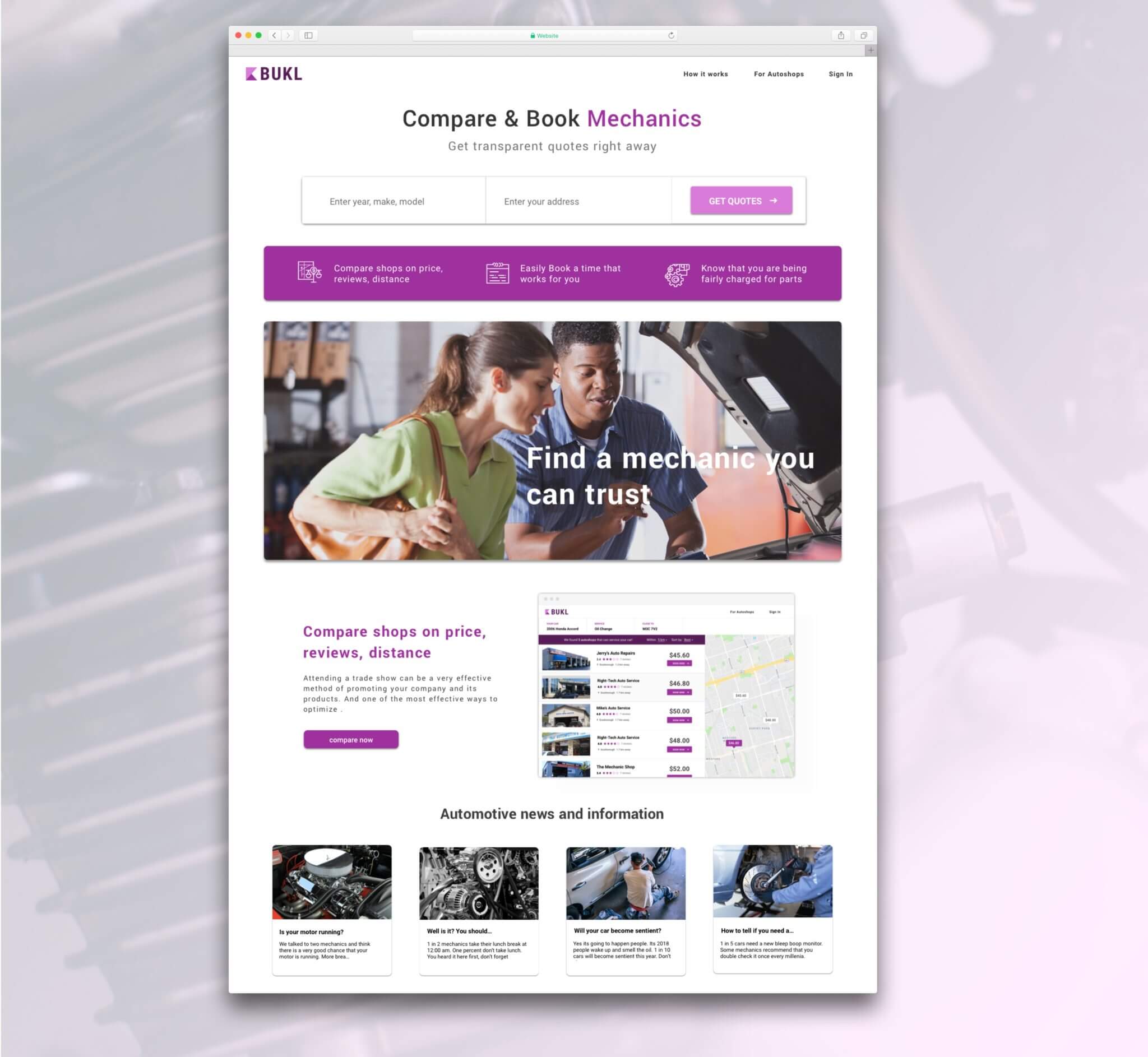

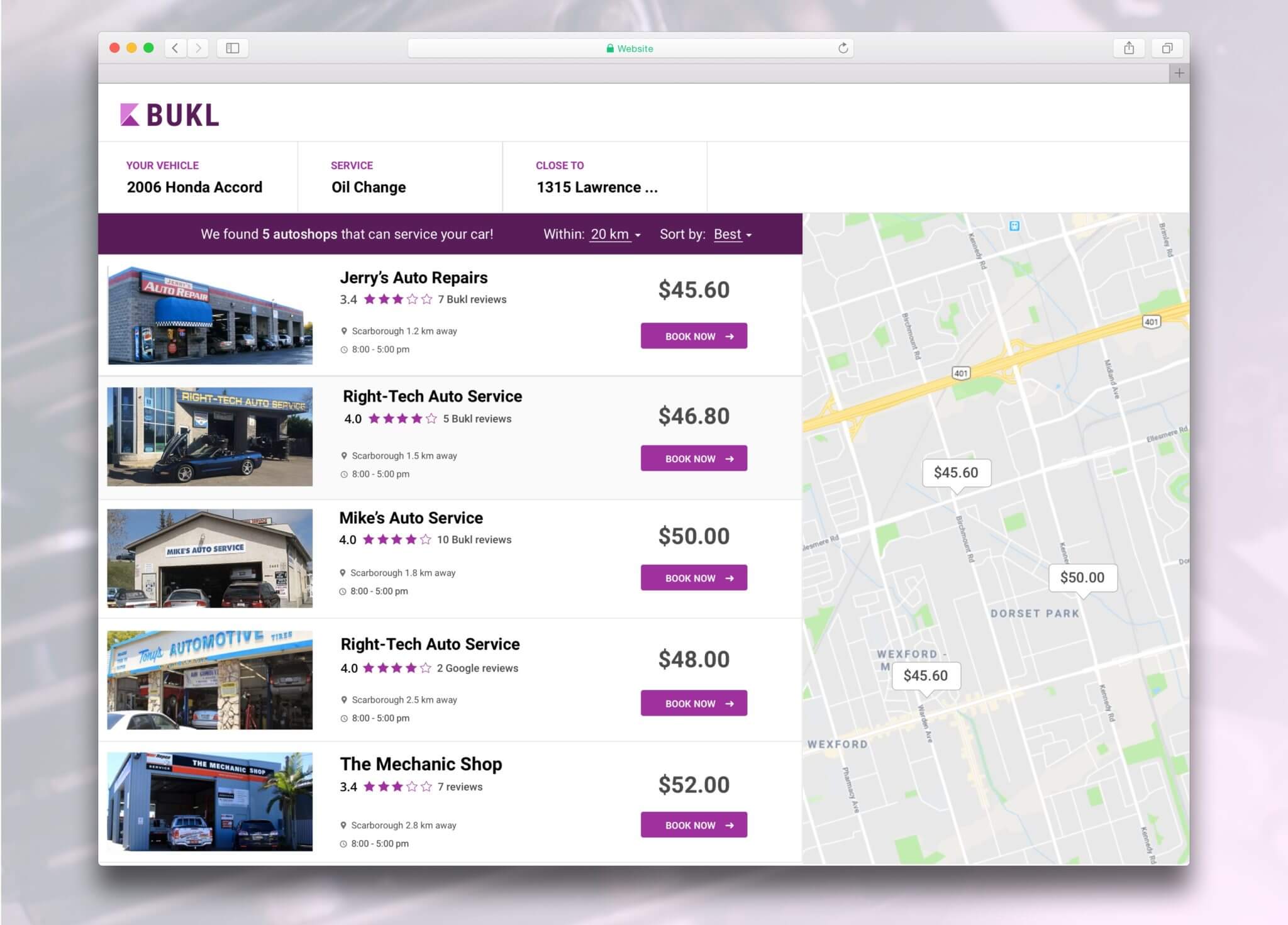
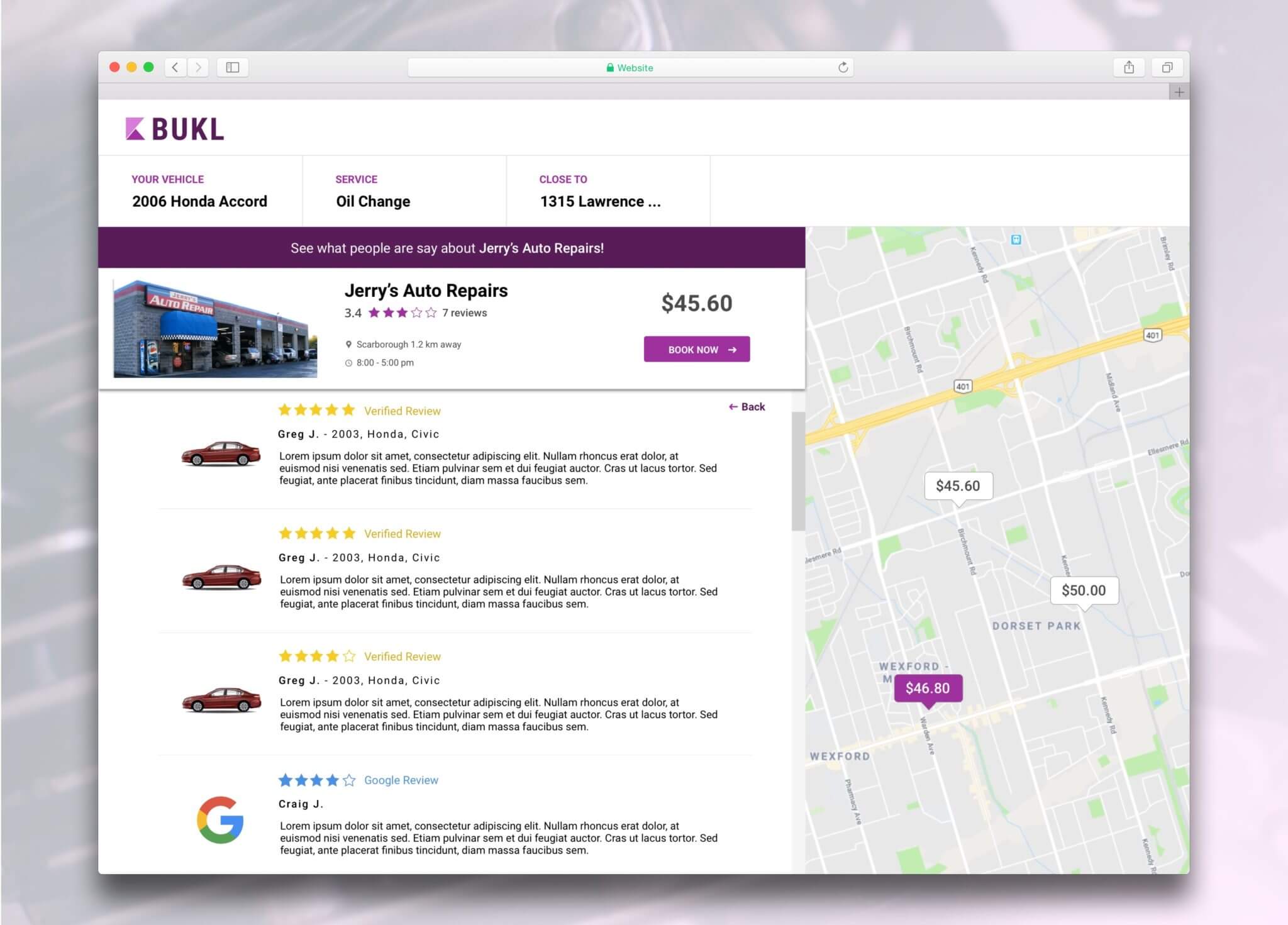
Final Thoughts
Working with Bukl and its founders I was able to work through the product with them. Helping them manage their scope and challenge their ideas to provide a cohesive focused product.
The product is currently in development and I'm excited to see how it does at launch. In meantime, you can view the prototype in Invision below.
Case Studies
Contact
Contact
jloyol@gmail.com
647-702-7210

